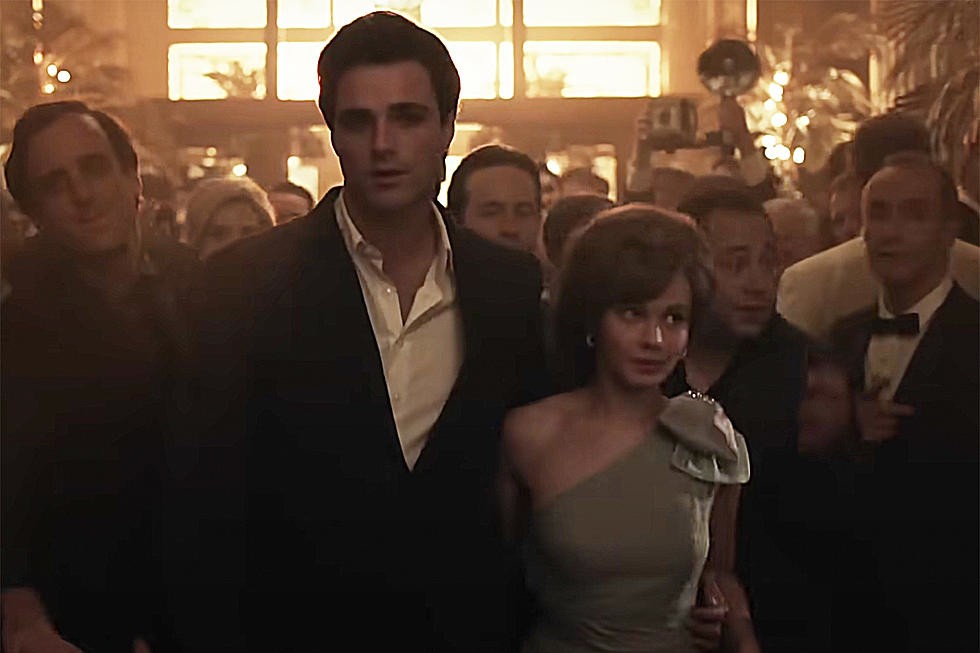Sofia Coppola’s penchant for depicting decadent loneliness reaches apotheosis in this richly textured and deceptively languorous drama. Returning to the narrative of a guileless young women fattened and displayed in a gilded cage of Marie Antoinette, Coppola dials down the boisterous anachronisms of her earlier film. Instead, she trusts in an exceptional performance from Cailee Spaeny to find the heart of an elliptical and impressionistic story that shies away from the expected dramatic beats.
Playing as the darker inverse to Baz Luhrmann’s exuberant Elvis, Sofia Coppola’s Priscilla digs beneath the myth of the King of Rock ‘n’ Roll. Based on the memoir Elvis and Me, the film charts the relationship between Priscilla Beaulieu and Elvis, from their meeting on a West German army base in 1959 when she was 14, through to its end in 1973.
Coppola’s approach is one of inference and elision. Jacob Elordi’s (brooding, cult leader-like) Elvis isn’t portrayed as a sexual predator, even given the age gap – reinforced by Elordi’s 6’5” frame next to Spaeny’s petite 5’1” – but what’s implied feels just as insidious and creepy. In his hands and through his control, he snuffs out her sense of self before it’s even fully developed. She’s a blank slate on which he imprints his own ideas of virginal purity, while obviously filling his carnal urges elsewhere.
When Priscilla and Elvis are together, he’s either with his braying coterie of sycophantic hangers-on, or rebuffing her advances after bestowing just enough attention on her to make her feel desired. Colonel Tom Parker, Elvis’ notoriously controlling manager, is absent here, but again Coppola implies there’s a transference of behaviours at work; Elvis learning from the master. Or the bullied becoming the bully.
So much of Priscilla seems to take place in the margins of what’s shown onscreen that the soul of the young woman at its centre also seems to be located elsewhere. This is clearly the point; where does one find the real Priscilla beneath the Elvis-approved dresses, carefully chosen makeup, and the vertiginous hair lacquered to solidity like a henge made of shellac? It’s frustrating to watch an entirely reactive Priscilla be moulded and prodded until you can almost see Elvis’ thumbprints in her skin. But again, this is completely by design.
If the storytelling resists easy consumption at every turn, the sumptuous visuals are far less aloof. Coppola’s been largely resistant to digital photography, but budget restrictions apparently applied, and along with DP Philippe Le Sourd (with whom she worked on The Beguiled), she creates a tactile and lush environment that springs to vibrant life once Priscilla escapes her humdrum, Teutonic army base. Through this, you get the sense of the giddiness, hope, and joy that is also there (the opening shot of Priscilla’s toes enjoying the sensation of a shaggy rug evokes this beautifully) in the movie, if you look really closely.
But the star is undoubtedly Spaeny. It’s a hard ask to find the real person in such deliberately elusive storytelling, yet she handles the complexity of her task with aplomb. Elordi gives good support, though it makes the thrust of Coppola’s narrative even more germane that so much of the discourse around the film centres on his performance compared to Austin Butler’s last year, rather than on its protagonist. But this is Spaeny’s film, and that is exactly as it should be. In such a coolly stylish, slippery, occasionally anti-dramatic narrative, it is about the only solid certainty one can apply.
In cinemas nationwide now


Comments